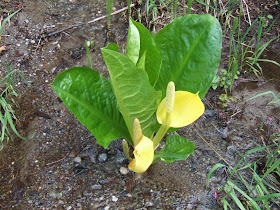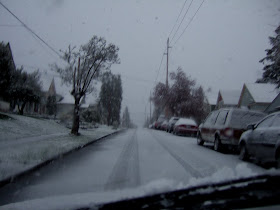Douglas fir wolf tree
Douglas fir wolf tree
Douglas fir wolf tree - great climbing tree
Trees growing in open ground such as a meadow, prairie, or a
bald do not have neighbors to compete with for sun light and hence growing upward to reach sun light is not necessary. As low branches can still gather light without neighboring trees, solitary trees tend to keep their lower branches versus forest trees that loose lower branches as the light to the lower part of the tree is cut off by the canopy. Hence, solitary trees that grow in this environment have heavy large side branches and take on a markedly different growth pattern than trees that grow in a forested area.
In a forest setting Douglas fir grows straight like a pillar with a high crown of branches to capture the light at the top of the forest canopy. Straight, knot free wood rates higher than wood with twisted grain and knots. Hence, trees that matured in a open setting are less desirable from a commercial timber perspective than the tall straight trees with few side branches.
The term wolf tree is an expression that these trees are greedy taking up nutrients and space at the expense of other trees and from a timber perspective are a pest as the tree is of little commercial value. The pest part being from a time when people viewed wolves as a pest (some people still do including some members of congress). The presence of heavily limbed Douglas fir within otherwise straight trees with few or no low side limbs indicates that the tree stood through a period of forest disturbance and grew for a period of time when the area was open and there were no other trees to compete with for light. A tree that survives a fire or a big blow down can become a wolf tree.
Due to frequent past forest disturbance old, heavily limbed Douglas fir are common in areas of the San Juan Islands. New wolf trees are developing in areas where balds and prairie are present. I observed the classic wolf tree pictured above growing in an opening on the slopes of Turtleback Mountain on Orcas Island. This is a area of very thin soil with a south facing slope and is within the rain shadow of the Olympic Mountains. Hence, the site is susceptible to draught and in the past frequent fires both natural and anthropogenic.
On other areas of Turtleback Mountain forest has developed around the wolf trees. The wolf trees indicate that prior to the forest the area had formerly been much more open. As the younger trees grow up around the wolf tree, the heavy lower branches will die, but of the large knots in the wood associated with the heavy limbs remain.
Wolf tree within a forest with old limbs dying off
Many old growth wolf trees survived initial timber harvest in the San Juans as they were of little value and were left alone. Much of the San Juan Islands was described as having poor timber during the initial timber harvest era in the late 1800s despite the proximity to water for transport. While the wolf trees may lack commercial timber value they certainty have a lot of character and are survivors.
Douglas fir wolf tree
Near the summit ridge of Turtleback Mountain I spotted a wolf tree that had blown over many years ago. The exposed roots had healed and one of the the limbs had become the lead tree.
Blown over wolf tree with one of the limbs taking over as the leader



















































